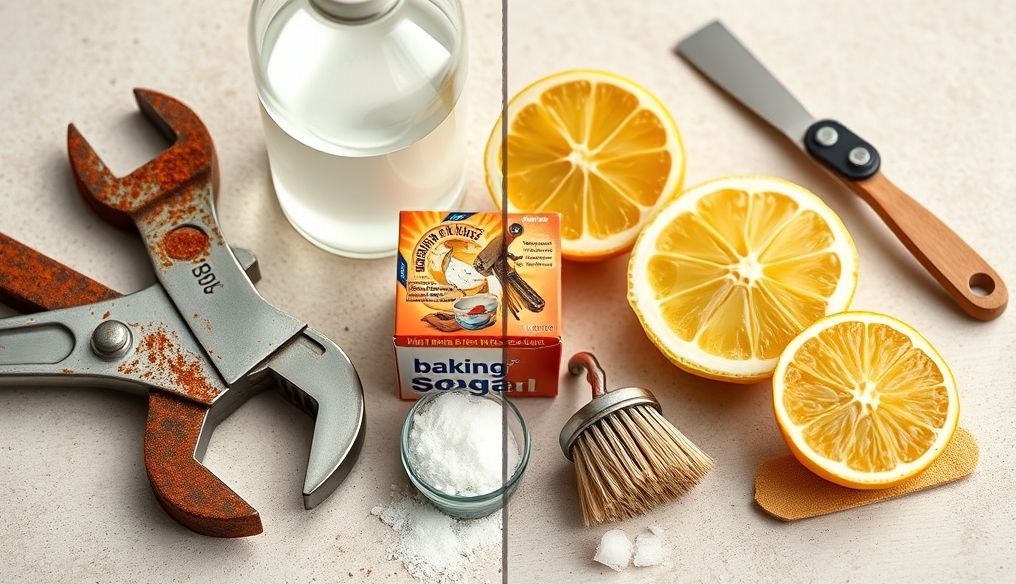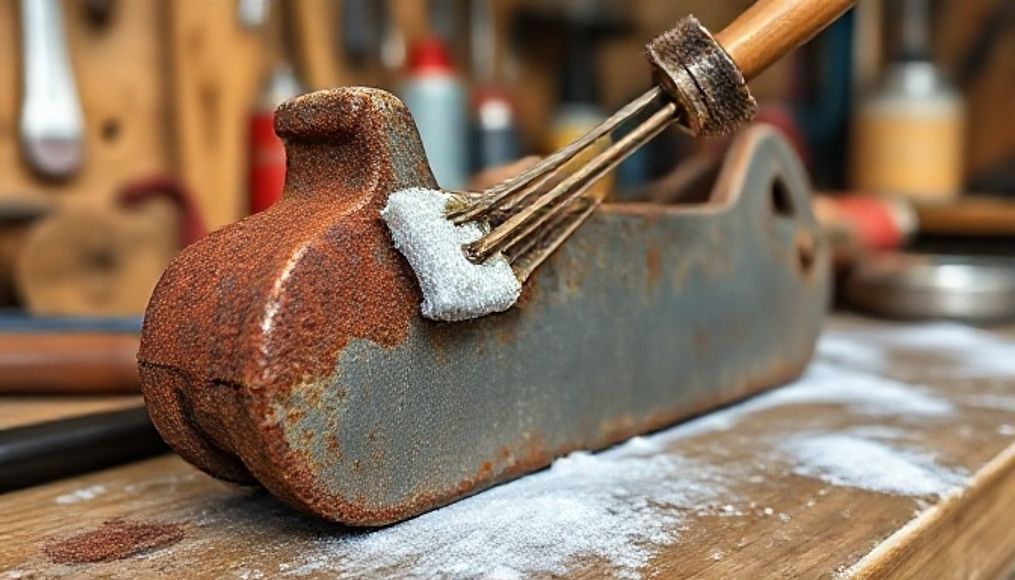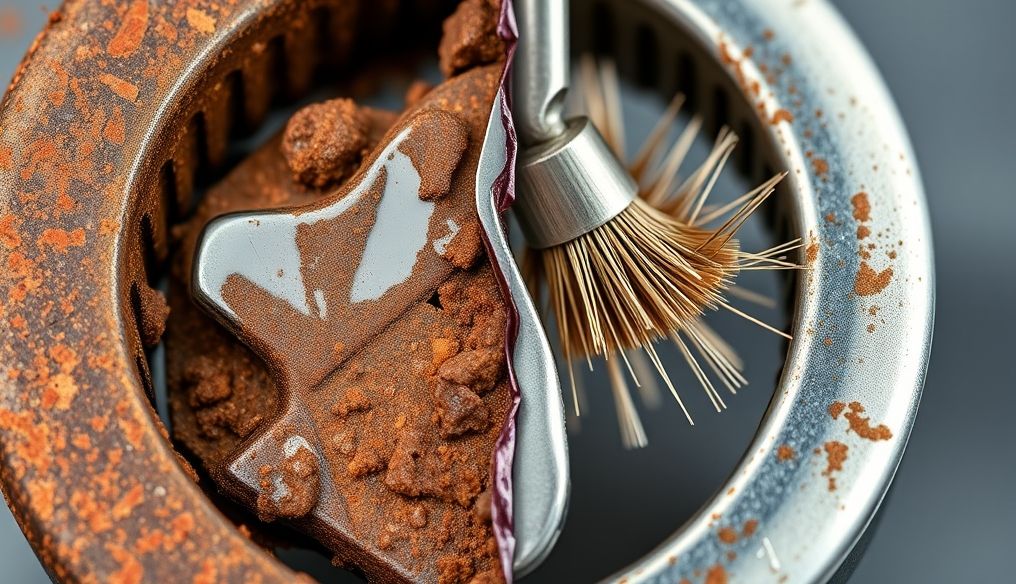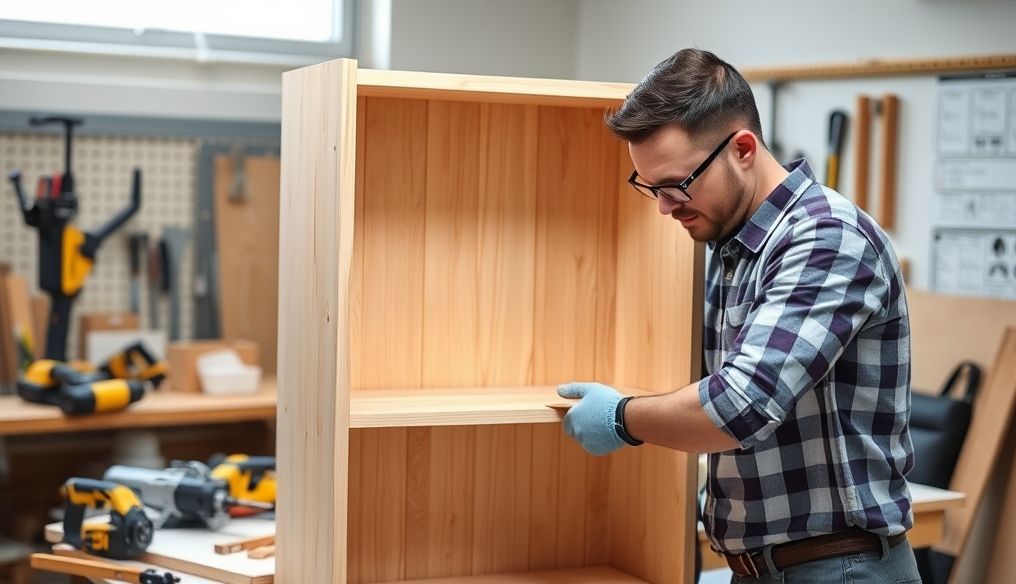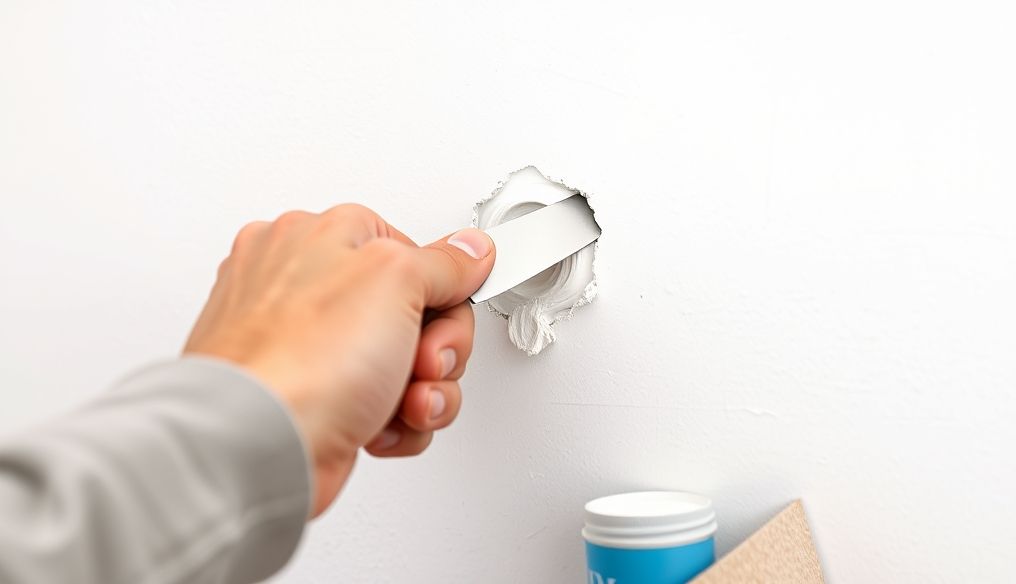How do I effectively and safely remove rust from metal surfaces?
Rust is a scourge that affects metals, especially iron and steel, as a result of their reaction with oxygen and moisture. Its impact is not limited to aesthetic appearance, but it weakens the metal and leads to its corrosion. Fortunately, there are many ways to remove rust, ranging from simple household solutions to specialized techniques. In this article, we will review a comprehensive set of these methods, focusing on their effectiveness and safety.
Chapter 1: Understanding Rust and its Types
Before delving into removal methods, it is important to understand the nature of rust. Rust is essentially hydrated iron oxide, a brittle compound that forms on the surface of iron or steel when exposed to oxygen and water. Rust types vary depending on environmental conditions and the type of metal, which affects the method of removal.
- Surface Rust: A thin layer of rust that forms on the surface, often easy to remove.
- Deep Rust: Penetrates deep into the metal, requiring more powerful removal methods.
- Pitting Rust: Causes small pits to appear on the metal surface, which can lead to severe corrosion.
Chapter 2: Basic Safety Equipment
Before starting any rust removal process, it is essential to take the necessary safety precautions to protect yourself from potential chemicals and flying particles.
- Protective Gloves: To protect your hands from chemicals and rust.
- Safety Goggles: To protect your eyes from flying particles.
- Mask or Face Shield: To prevent inhalation of dust and harmful fumes.
- Protective Clothing: To protect your skin from chemicals.
- Good Ventilation: Work in a well-ventilated area to reduce exposure to fumes.
Chapter 3: Rust Removal Methods Using Household Materials
Household materials are an economical and safe option for removing surface rust. Here are some effective methods:
1. White Vinegar
White vinegar is acidic in nature, which helps to break down rust. Soak the rusty metal piece in white vinegar for 30 minutes to several hours, depending on the severity of the rust. Then scrub it with a wire brush or scouring pad.
Example: White vinegar can be used to clean rusty kitchen tools or metal hinges.
2. Baking Soda
Baking soda is a mild abrasive that helps remove rust without damaging the metal. Make a paste of baking soda and water, then apply it to the rusty area and leave it for 15-20 minutes. Scrub it with a brush or coarse cloth.
Example: Baking soda can be used to clean rusty silverware or bicycle parts.
3. Lemon Juice and Salt
The citric acid in lemon juice breaks down rust, while salt helps to scrub the surface. Sprinkle salt on the rusty area, then pour lemon juice over it. Leave it for 2-3 hours, then scrub.
Example: Lemon juice and salt can be used to clean rusty garden tools or small car parts.
4. Potato and Soap
Potatoes contain oxalic acid, which helps to break down rust. Cut the potato in half, then put some soap on it. Rub the rusty area with the potato, then rinse with water.
Example: Potato and soap can be used to clean rusty cutlery or small parts of household appliances.
Chapter 4: Rust Removal Methods Using Specialized Products
If household methods are ineffective, specialized rust removal products can be used. Be sure to follow the manufacturer's instructions when using these products.
1. Chemical Rust Removers
Chemical rust removers are available in liquid or gel form. These products contain strong chemicals that break down rust quickly. Apply the product to the rusty area and leave it for the specified time, then rinse with water.
Warning: Use chemical rust removers in a well-ventilated area and wear gloves and safety goggles.
2. Rust Converters
Rust converters transform rust into a protective layer that prevents further corrosion. Apply the converter to the rusty area and let it dry. This layer can then be painted.
Example: Rust converters can be used on car bodies or external metal surfaces.
3. Rust Abrasives
Rust abrasives, such as sandpaper or a wire brush, are used to mechanically remove rust. Rub the rusty area vigorously until the rust is gone. This method can be used to remove deep rust.
Warning: Wear safety goggles when using rust abrasives to protect your eyes from flying particles.
Chapter 5: Using Power Tools to Remove Rust
Power tools can be used to speed up the rust removal process, especially on large surfaces.
1. Electric Drill with Wire Brush
Attach a wire brush to the electric drill, then use it to scrub the rusty area. This method is effective for removing deep rust.
2. Electric Sander
The electric sander uses sandpaper to remove rust. Choose sandpaper suitable for the severity of the rust.
3. Sandblaster
The sandblaster uses a stream of sand or other abrasive materials to remove rust. This method is very effective for removing deep rust and old paint.
Warning: Wear safety goggles and a face mask when using power tools to remove rust.
Chapter 6: Electrolytic Rust Removal Methods
Electrolysis is a method that uses electric current to remove rust. This method requires special preparation, but it is very effective for removing deep rust.
Required Components:
- Car Battery or Battery Charger
- Electrolyte (such as washing soda or baking soda)
- Large Plastic Container
- Scrap Iron Piece (Anode)
- Rusty Metal Piece (Cathode)
- Connecting Wires
Steps:
- Fill the container with water and add the electrolyte.
- Place the scrap iron piece on one side of the container and the rusty metal piece on the other side.
- Connect the positive terminal of the battery to the scrap iron piece (anode) and the negative terminal to the rusty metal piece (cathode).
- Allow the electric current to pass through the solution for several hours. The rust will begin to break down from the rusty metal piece and adhere to the scrap iron piece.
- Remove the rusty metal piece from the solution and rinse it with water.
Warning: Electrolysis produces flammable hydrogen gas. Perform this process in a well-ventilated area and away from any sources of ignition.
Chapter 7: Preventing Rust Formation in the Future
After removing rust, it is important to take steps to prevent it from forming again.
- Painting Metal Surfaces: Paint provides a protective layer that prevents oxygen and moisture from reaching the metal.
- Oiling Metal Surfaces: Oil forms a protective layer that prevents rust formation.
- Storing Tools and Equipment in a Dry Place: Reduces their exposure to moisture.
- Using Rust-Resistant Materials: Such as stainless steel or aluminum.
- Regular Cleaning: Removing dirt and salts that may increase the risk of rust formation.
Chapter 8: Additional Tips
- Test the rust removal method on a small, inconspicuous area before applying it to the entire surface.
- Use a soft-bristled brush to clean delicate surfaces.
- Do not use strong abrasives on painted or chrome-plated surfaces.
- If the rust is severe, you may need to repeat the removal process several times.
- In some cases, it may be necessary to replace the entire rusty metal piece.
Removing rust from metal surfaces is essential to maintaining the integrity and appearance of equipment and tools. By following the methods and guidelines mentioned in this article, you can remove rust effectively and safely, and prevent its formation in the future.
